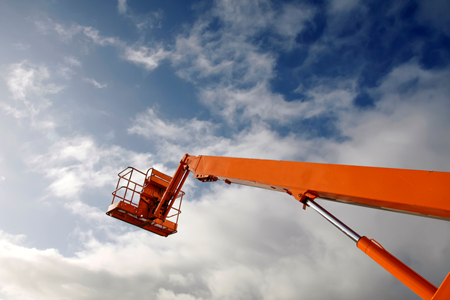This week’s guest blog comes from Jayde Ferguson of DM Civil Contractors.
The construction and mining industry is easily one of the most dangerous when it comes to falls and injuries in the workplace. Each year, thousands are injured on the job and reducing this occurrence of potential risks is a consistently high priority of safety and health professionals all over the country.
Just in Australia alone, recent health and safety statistics reveal a total of 117,815 number of serious claims reported. Muscular stress while lifting, carrying or putting down objects was the top risk, with falls on the same level and falls from a height following closely behind. According to the US Department of Labour, slips trips and falls make up the majority of the general industry accident too, which accounts for about 25% of all reported injury claims in the year.
Thus, it’s safe to say measures need to be taken to ensure the safety of all workers. Whether it’s a momentary lapse of distraction or not taking the right healthy and safety precautions – we check out the importance of putting safety first to help reduce falls and injuries in the workplace.
1. The Importance of Regular Machine Maintenance
To keep work equipment safe and reliable, it’s imperative regular machine maintenance is done. Schedules should be in place to prompt relevant staff to ensure equipment is tested and checked to avoid potential accidents and dangerous situations. According to the European statistics on accidents at work, it’s estimated that around 15-20% of accidents are related to maintenance operations, with around 10% of these leading to fatal incidents.
It’s important though, that only staff qualified to perform regular machine maintenance should be involved in the process of repairing, cleaning and adjusting equipment. Some of the biggest risks posed are actually in the machine maintenance part so ensuring relevant staff have the right training to service equipment is priority. By keeping all operating machines up to speed and having trained staff equipped with a good maintenance management software to get the work done, workplace hazards can be significantly eliminated.
2. Keeping Entrances and Exits Risk Free
The means to any workplace must be kept safe at all times, including all entry and exit points to the work site and using heavy duty operating equipment. More so in the mining and construction industry when workers are in and out of pits, tanks and other large machines – all entry and exit points should be kept free of obstacles. Injury and fall risks increase when there’s work materials or equipment in high traffic areas so to encourage a safe working practice by arranging periodic inspections for such hazards.
For high risk areas or jobs, it can be a worthwhile idea for companies to invest in safety platforms. This can assist in keeping entrances and exits into tunnels, tanks and work pits free of clutter and help to reduce the risk of falls and injures to employees working on site. Fall arrest platforms are portable for site convenience and combined with an emergency extraction crane, provides workers with a safe access to do their jobs.
3. Correct Clothing and Training
The right clothing and work safe training can reduce the risk of falls and other work related injuries significantly. Proper footwear is essential to preventing falls and slips, and all employers should wear appropriate footwear for their specific work duties.
If fall related injuries do arise in the workplace, work site supervisors should evaluate the type of footwear worn to see if it contributed at all. Depending on the type of work on site, protective eye and ear equipment should also be worn at all times or whilst operating machinery. Employees should also have the relevant compulsory training on hand available to them and given the right safety clothing for work duties.
4. Height Safety
Incidents associated with height safety is one of the highest health and safety claims reported in most countries. And despite how many control measures are in place, it still remains an extremely common issue. Whilst fall risks can occur in many different situations, the most common examples tend to be associated with heights – using ladders, standing on platforms close to a hole or pit, climbing on trucks and loads or working near unprotected edges.
When working from heights, employees should be anchored to a point with a protective harness to prevent falls from unprotected edges. Fall arrest systems or fall arrest platforms can provide a stable access to high workplaces or elevated work platforms should be used to allow workers to get the job done from various heights safely.
5. Knowing Your Limits
One of the biggest cause of injuries in the workplace involves risks that can simply be avoided. Injuries from excessive lifting, carrying, pushing, pulling or holding work site equipment and materials accounts for a big chunk of health and safety issues so proper care is essential.
Whilst it’s not always possible to have other staff help with heavy items, overexertion in the workplace can still be avoided by other means. The right training – how to lift properly or how to use machinery the correct way – can definitely cut down the rise of injuries. Proper working techniques and knowing (and sticking too!) your limits should be encouraged at all costs in the workplace to prevent stress to the body.
Author Bio
This article is written by Jayde Ferguson, who writes for DM Civil Contractors based in Perth, Western Australia – providing the most tailored and sustainable mining and construction equipment to assist with health and safety in the workplace.

